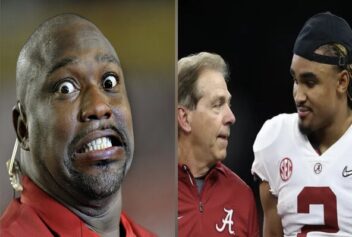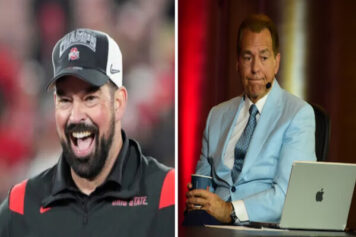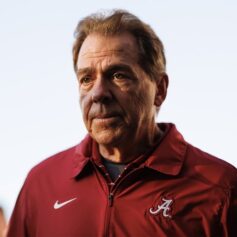On a celebrated day, that by all appearances single-handedly keeps the fax machine industry visible on the national radar, it’s fitting to realize that the owners of the thousands of signatures that flow into athletic departments have no perspective on what they’re sending.
For National Signing Day—a February free-for-all of press conferences and subjective rankings both televised and scrutinized—the National Letter of Intent has become more a symbol than a necessity. It’s the publicized finish line for 17- and 18-year-olds to wrap up their athletic recruitment. The act plays out like a well-rehearsed routine: The young man puts on a hat, signs on the dotted line, smiles and waves, faxes the signature over, coaches fist bump or (for the really coveted recruits) let out yells of exhilaration and relief.
That’s Signing Day—has been for years.
However, those cheers might as well be celebrations of the shift in power between the coaches and recruits, because once that NLI—a voluntary measure with benefits skewed dramatically toward the school—is faxed in with signature in tow, the player’s rights diminish exponentially. He’s no longer a coveted young man with coaches and fans fawning over his skill set; he’s now a part of the system.
As Sports Illustrated’s Seth Davis pointed out a few years back, the NLI was never negotiated or discussed with the well-being of the athletes in mind, nor is it an entity of the NCAA. There are a few benefits—it disallows other schools to continue recruiting said athlete, and (loosely) binds the school to its one-year scholarship agreement—but they do not outweigh the negatives. As for the NCAA, it conveniently shrugs its collective shoulders and essentially says: This is how we’ve always done it.
That same sentiment comes out in the actions of high schoolers all over the country on Signing Day. Hell, it’s called SIGNING DAY. You’re supposed to sign something, right?
But it’s not a requirement to sign, nor should it be until the stipulations of the NLI are re-negotiated, or, better yet, negotiated for the first time, to account for some blatant oversights designed to limit the athletes’ rights.
Then again, what would all those fax machines be used for?
HOTTY TODDY
It’s always a treat to monitor the social media stratosphere on Signing Day, specifically looking out for commentary concerning a few unlikely names near the top of the recruiting rankings: That school is always cheating, the coach always cutting corners.
This year’s culprit: Ole Miss.
How dare the Rebels start pulling in good players? They are supposed to be the SEC’s whipping boy along with Kentucky—a long-standing tradition that was never intended to end. So when they start beating the likes of Clemson, Alabama, Georgia and LSU for signees, imaginary red flags are raised. Whatever. There’s no denying the class that coach Hugh Freeze signed is the day’s most impressive, all things considered, featuring the nation’s No. 1 recruit (Robert Nkemdiche), the No. 1 wide receiver (Laquon Treadwell), two of the top three offensive tackles and the second-ranked safety (Antonio Conner).
As of Wednesday afternoon, the once-lowly Rebels were the talk of college football with the fifth-ranked class nationally .
Of course, being the talk of college football will garner plenty of negative criticism. Accusations of paying players, under-the-table deals and the like spread like wildfire.
Personally, I hope the recruits did get paid. Every last one of them at every last school. Consider it a signing bonus before surrendering personal rights to a rigged NCAA system that promotes “free education” as fairer-than-fair compensation for the multi-billion dollar economic boon the players provide—at least until Ed O’Bannon and his team (potentially) tear it all down .
RICH GET RICHER
This is no longer a surprise in college football recruiting (nor basketball, really), but it comes out in blatant overtones during discussions of how Ole Miss and Vanderbilt break into the national recruiting rankings. Because, basically, it is a surprise.
Big-time programs like Alabama and Texas and Ohio State not only come with the largest recruiting budgets and (some of) the top coaching staffs around, but also come equipped with inherent advantages. Those upsides are not easy to overcome, so it’s no wonder that eight of Forbes’ 10 most valuable football teams also ranked among the top-11 teams in ESPN’s recruiting rankings.
Just look back four years : the top three classes were Florida, Texas and Alabama. They were USC, Florida and Alabama in 2006. Go back as far as you want and—barring big-time coaching changes or NCAA violations—the names do not change. Don’t expect them to any time soon. There is no parity in any facet of college football—just ask the SEC.
Nick Saban will continue cleaning up. Urban Meyer is just getting started in Columbus.
Fads eventually end.
But some trends keep trending, and “The rich get richer in college football,” is now the annual tagline for Signing Day.



